(362 products available)







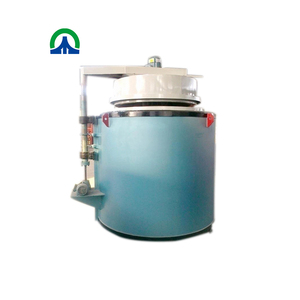































































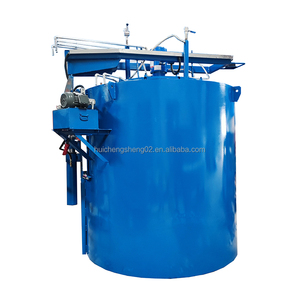

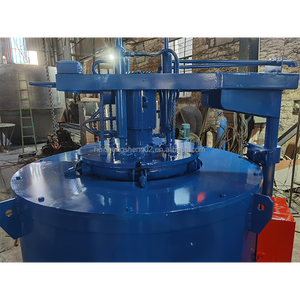

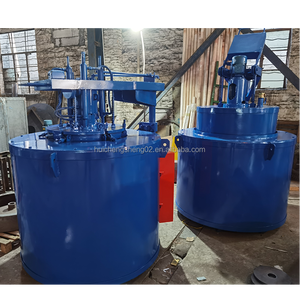
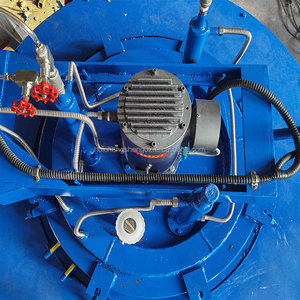

































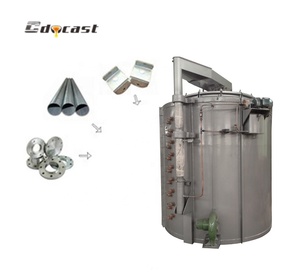

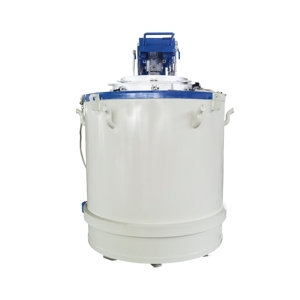





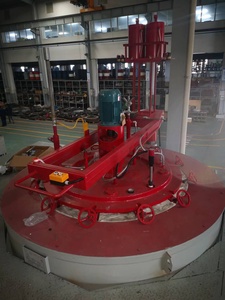


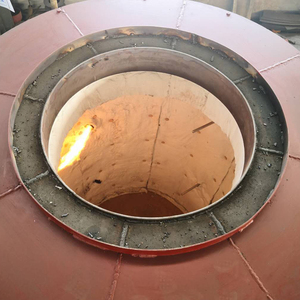
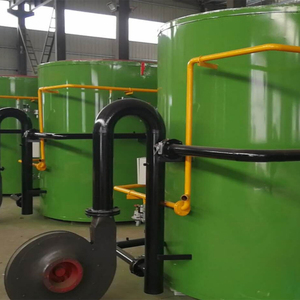




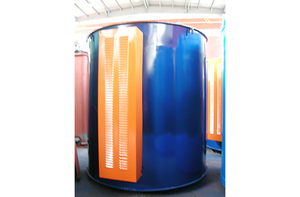
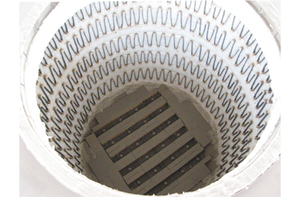
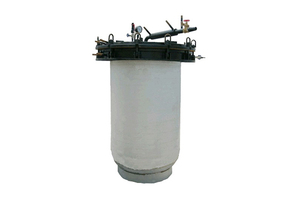
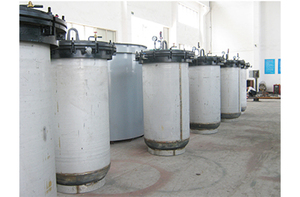
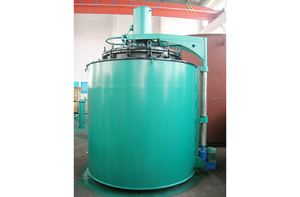



















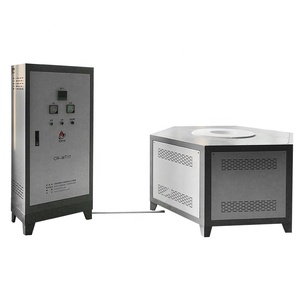

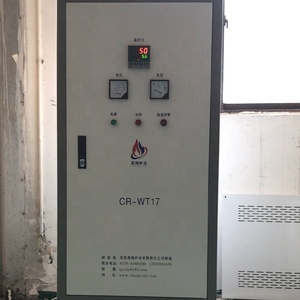
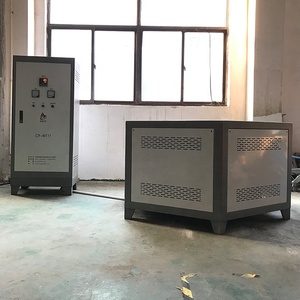




















































An electric carburizing furnace is a heat treatment furnace that is used for carburizing purposes. Carburizing is the process of increasing the carbon content of materials, usually low carbon steels and iron, by diffusing carbon into the metal's surface to improve properties like wear resistance and hardness. There are several types of carburizing Electric furnaces available, including the following:
Mesh-belt Electric Carburizing Furnaces
This furnace is used for continuous carburizing heat treatment. It usually has a moving belt composed of net-like or strip materials. The electric mesh-belt carburizing furnace features precise temperature control, uniform carburizing, and high production efficiency. It is suitable for heat treatment of a large quantity of workpieces that are of small size and are also continuously fed. The workpieces are rapidly cooled, which ensures good carburizing quality and protects the structure of the workpieces.
Box Electric Carburizing Furnace
This type of furnace uses electricity as its heating power and boxes as its carburizing chamber. It is commonly used for batch carburizing heat treatment of workpieces of various shapes and sizes. The box electric carburizing furnace has a simple and compact structure. It is easy to operate and maintain. The carburizing effect of this furnace is great, but its production efficiency is relatively low; thus it is usually used for treating small batch and mixed workpieces.
Vacuum Carburizing Electric Furnaces
This furnace uses vacuum as its carburizing medium and electric power as its heating method. It is suitable for the heat treatment of high-quality, precision parts that have complex shapes. The vacuum carburizing electric furnace has advantages like high carburizing speed, uniform carburizing depth, and excellent carburizing quality. Additionally, the vacuum electric furnace does not have oxidation and decarburization, which improves the quality of the workpieces. However, the vacuum carburizing electric furnace is expensive and has a high energy consumption.
Trolley Electric Carburizing Furnaces
The trolley electric carburizing furnace is a kind of batch carburizing equipment. It has a trolley for carrying workpieces and a carburizing chamber for carrying out the carburizing process. The depth of carbonization is the main factor that determines the strength, toughness, and fatigue resistance of the material. The trolley electric carburizing furnace is designed to facilitate loading and unloading of workpieces, making it suitable for small to medium production volumes.
Purchasing an electric furnace for carburizing requires careful consideration of several key specifications that affect performance, capacity, and application suitability. By understanding these essential parameters, buyers can make informed decisions when selecting an electric carburizing furnace for their specific needs.
Heating element type
The performance and temperature range of an electric carburizing furnace can be significantly impacted by different types of heating elements. The most common heating elements include silicon carbide rods, molybdenum disilicide rods, or tubular stainless steelsheath elements. In general, silicon carbide rods are widely used in carburizing furnaces due to their strengths at high temperatures and chemical resistance.
Temperature control
An electric carburizing furnace's sophistication and accuracy depends heavily on temperature control devices. Modern furnaces frequently use digital controllers with programmed capability for precision nucleation and cooling control. These programmable controller allows users to set specific temperature ranges and time durations, enabling automation for consistent results.
Atmosphere generation
Decomposition of organic compounds or dissociative reaction of methane are frequently used methods for generating the carburizing atmosphere. In some furnaces, a mixture of propane and ethylene can also be used. The atmosphere in the furnace is crucial for carbonizing components like the carburizing gas. To provide proper surface hardening, it must be closely monitored and changed when necessary.
Carbon potential
The quantity of carbon that can be added to the component's surface is referred to as the carbon potential. The carbon potential values can vary depending on the atmosphere used, the temperature of the furnace, and the time the component's surface was exposed to the carburizing atmosphere. Usually, the carbon potential exists in a range of 0.2 to 1.2 percent.
Cooling system
An electric carburizing furnace's cooling system is very crucial for optimizing heat transfer rates and minimizing heat losses. The selected design not only affects energy efficiency but also impacts safety compliance standards. The two most common types of cooling systems are forced air cooling and the quench method. By utilizing high-velocity fans, the forced air cooling method promotes heat dissipation from the furnace. This triple bath quench method involves immersing heated parts in a liquid such as water or oil, directly cooling them, which also helps to promote carbon absorption in the steel.
Furnace insulation
In an electric carburizing furnace, insulation is important for thermal efficiency and safety. High-temperature insulations, like ceramic fiber or rigid board, are used to keep the heat inside the furnace. By limiting heat loss, this not only ensures uniform temperature distribution inside the furnace but also reduces energy consumption.
With proper care and routine maintenance methods, an electric carburizing furnace can maintain production efficiency over time with minimum downtimes and defects.
Carburizing hardened steel parts
An electric furnaces carburizing treatment is primarily used to increase the surface carbon content of steel components, such as tooth and shaft parts, in order to improve their surface hardness, wear resistance, and service life. The precise temperature control and uniform heating of electric furnaces makes it ideally suited for carburizing heat treatment.
Case hardening of mechanical components
Electric carburizing furnaces are also used for the case hardening of mechanical components, such as gears, bearings, axles, etc. Carburizing increases the hardness of the outer layer of these components, providing excellent wear resistance, while the inner layer retains good toughness and ductility, thus improving their fatigue life and reliability.
Precision carburizing of high-value workpieces
For high-value metallic workpieces, such as precision machine parts, tooling components, etc., individual electric furnaces carburizing provides an optimum carburizing environment. This protects these pieces from unwanted oxidation or other superficial damage during the carburizing process, improving their quality and yield.
Mass carburizing of production parts
The electric carburizing furnace has a high production capacity. This allows for the mass carburizing of production parts, such as automotive drive parts, motorcycle transmission parts, etc. The uniform carburizing quality ensures stable product quality, meeting the large-scale production requirements of enterprises.
Carburizing of special atmosphere
The customizing capability of electric carburizing furnaces allows special atmospheres for carburizing, such as ammonia decomposition, to be produced in the furnace. This satisfies the specific process requirements of different industries and improves the technological level of heat treatment production.
Consider the following tips when choosing the proper electric furnace for the carburizing treatment of workpieces.
Capacity and Size
Investigate how many or how big the industrial carburizing furnace can treat. Choose a furnace that can handle the quantity or size of the workpieces for the industry's needs. It aids in avoiding any capacity issues that could eventually raise costs or reduce efficiency.
Gas Composition Control
A precise control over the composition and flow of the carburizing gas is crucial for attaining the desired carbon penetration in workpieces. This includes having adaptable options for carburizing gases such as propane and ethylene or even methods like liquid carburizing or endothermic gas. The variety of control settings allows companies to choose the best carburizing atmosphere for their unique needs.
Temperature Control
The recommended carburizing temperature range is between 850-950ºC. However, the ideal temperature may vary depending on the type of steel and desired surface hardness. Therefore, it is important to choose a furnace that allows precise temperature control. A programmable control system should enable users to set and monitor the temperature during the carburizing process. As a result, this can improve treatment quality and reproducibility and protect valuable workpieces from possible damage caused by improper temperatures.
Furnace Type
Industries have a choice between pit, vacuum, and atmospheric furnaces, which each have distinct advantages. For instance, pit furnaces are compact and straightforward. Vacuum furnaces offer a clean environment that prevents oxidation, and atmospheric furnaces are conventional and cost-effective. Choose a particular type of furnace that best satisfies the design and performance needs of the industry.
Warranty & Customer Support
Select a supplier who offers a comprehensive warranty for the furnaces and reliable customer support services. This ensures protection and assistance in case of any issues or required maintenance during the carburizing process.
Q1: How does an electric carburizing furnace perform carburizing?
A1: In general, the carburizing process takes place in a controlled environment. Carbon-rich materials, like carbon monoxide or natural gas, are typically used as carburizing mediums. The furnace's temperature is raised between 850-1150 °C to allow the carbon to diffuse into the surface of the metal workpieces over a certain period.
Q2: How long does carburizing take in an electric furnace?
A2: The duration of carburizing in an electric furnace can vary from a few hours to several days depending on factors such as temperature, carbon concentration, workpiece size, and desired carbon depth. Typically, at high temperatures, carburizing may take a few hours to 30 minutes for shallow carbon penetration, while at lower temperatures, it may take several hours or even days for deeper carbon penetration.
Q3: Does carburizing increase hardness?
A3: Yes, carburizing increases the surface hardness of workpieces. Carbon diffusion into the surface makes the workpieces to be more durable and wear-resistant, thus improving their performance.
Q4: What are the advantages of electric furnaces?
A4: The main advantages of electric carburizing furnaces are no flue gas and no pollutant emissions, which makes it easier to comply with environmental regulations. Furthermore, electric furnaces allow precise temperature control which enables consistent and repeatable results, and again, very high temperatures can be achieved.